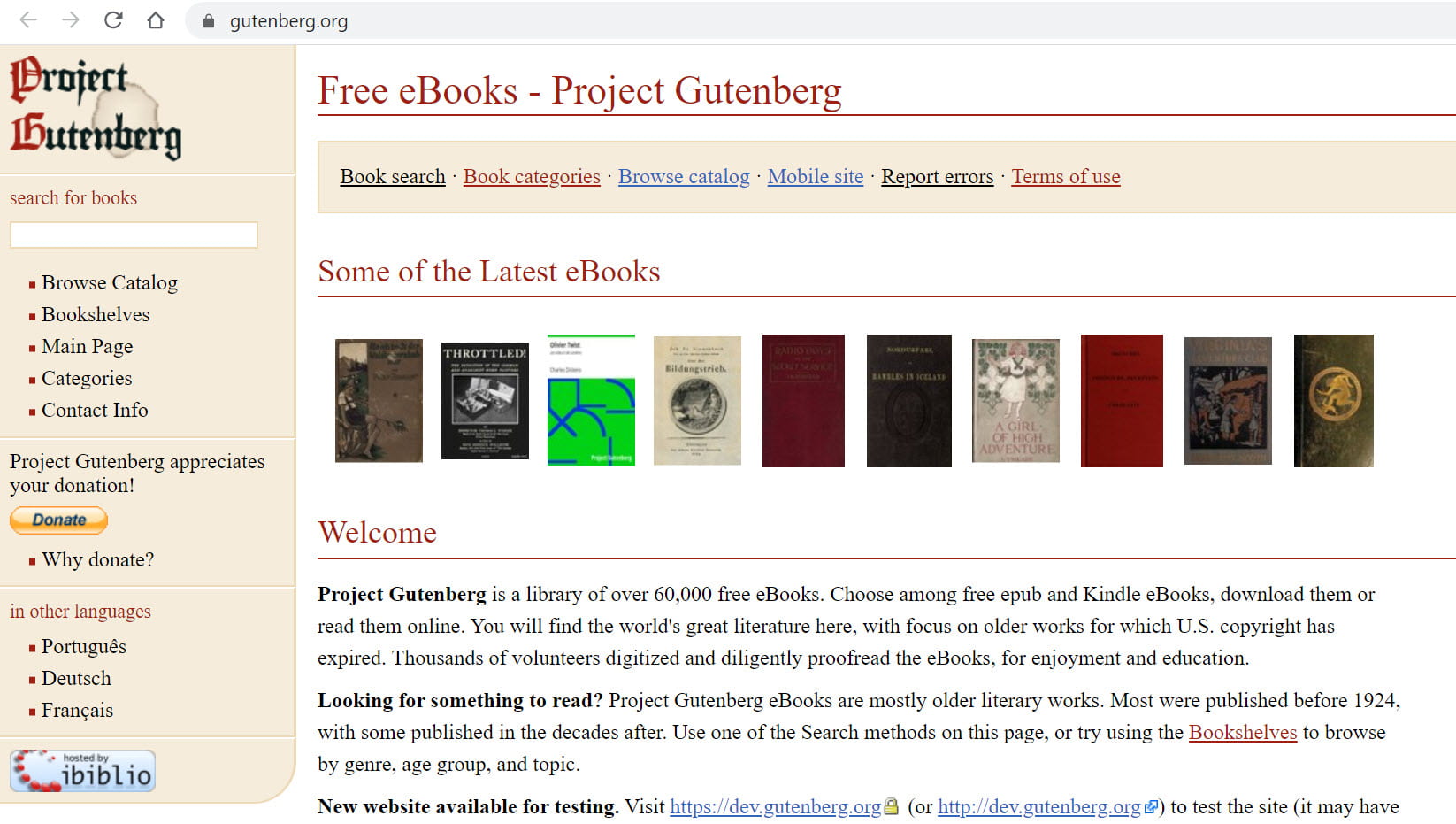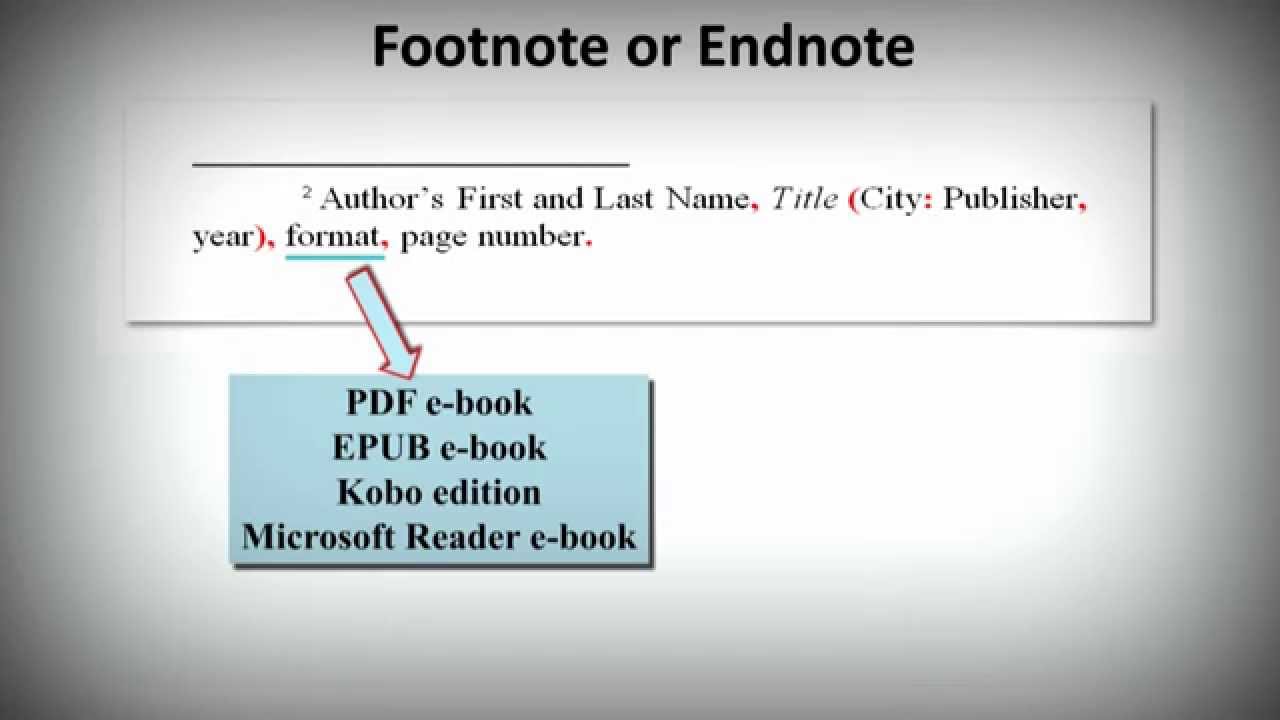Introduction
Welcome to the world of eBooks! In this digital age, the way we read and consume content has undergone a significant transformation. Gone are the days when we relied solely on physical books to access information. With the rise of technology, eBooks have emerged as a convenient, portable, and eco-friendly alternative to traditional print books.
eBooks, short for electronic books, have gained immense popularity in recent years. They provide a unique reading experience that combines the convenience of digital technology with the joy of reading. In this article, we will explore what eBooks are, their history, advantages, formats, and how to create, read, publish, and sell them. So, if you’re curious about the world of eBooks or considering delving into it yourself, keep reading!
But first, what exactly is an eBook? In simple terms, an eBook is a digital version of a book that can be read on various electronic devices such as e-readers, tablets, smartphones, or computers. Unlike physical books, eBooks are not printed on paper. Instead, they are presented in a digital format that can be easily accessed, downloaded, and stored on electronic devices or cloud-based platforms.
The appeal of eBooks lies in their convenience. With just a few taps or clicks, you can have access to a vast library of books from the comfort of your own home or on the go. This accessibility is especially beneficial for avid readers who no longer need to lug around heavy bags filled with multiple books. Instead, they can carry their entire library in a single device.
Furthermore, eBooks are not limited by physical constraints. They can include interactive features, such as hyperlinks, multimedia elements, and search functionalities, which enhance the reading experience and make it more engaging and interactive. Additionally, eBooks can be easily updated and revised without the need for reprinting, ensuring that the content remains current and relevant.
Definition of an eBook
An eBook, short for electronic book, is a digital version of a printed book that can be read on electronic devices. It is a file containing the text, images, or both, of a book that is formatted to be readable on a variety of devices, such as e-readers, tablets, smartphones, or computers.
eBooks are designed to replicate the experience of reading a traditional book while offering the advantages and convenience of digital technology. They come in different file formats, such as EPUB, MOBI, PDF, and AZW, each with its own features and compatibility with specific devices and platforms.
Unlike printed books, which require physical production and distribution, eBooks can be easily and instantaneously accessed through online platforms, digital libraries, or bookstores. This eliminates the need for physical storage space and reduces environmental impact, making eBooks a more sustainable and eco-friendly choice.
Furthermore, eBooks offer various functionalities and features that enhance the reading experience. These include the ability to adjust font size, layout, and background color, as well as the option to highlight text, make annotations, and search for specific words or phrases. Many eBooks also support multimedia elements, such as videos, audio clips, and interactive graphics, which add a dynamic and immersive aspect to the reading experience.
It is worth noting that eBooks can be both free and paid. Many classic works of literature, as well as contemporary titles, are available for free download from sources like Project Gutenberg and Open Library. On the other hand, eBooks published by commercial publishers or self-published authors are usually sold through online retailers or dedicated eBook platforms. The pricing of eBooks can vary depending on factors such as popularity, demand, and the presence of additional content or features.
Overall, the definition of an eBook encompasses its digital nature, its versatility across different devices, and the various features that enhance the reading experience. Whether you are a passionate reader, an aspiring author, or a publishing professional, understanding the concept of eBooks is crucial in navigating the dynamic landscape of digital publishing.
History of eBooks
The history of eBooks traces back to the 1960s when computer scientist Douglas Engelbart envisioned a future where people could access and share information electronically. However, it was not until the 1970s that the concept of eBooks began to take shape.
In 1971, Michael S. Hart founded Project Gutenberg, a pioneering digital library that aimed to make literature accessible to everyone. The project started with the digitization of the United States Declaration of Independence, and soon after, Hart and his team began digitizing and distributing classic works of literature. This marked the birth of eBooks as we know them today.
Throughout the 1980s and 1990s, advancements in technology set the stage for the widespread adoption of eBooks. In 1984, Sony introduced the Data Discman, one of the first portable electronic book reading devices. While it did not achieve significant commercial success, it laid the foundation for future eBook reading devices.
In the late 1990s, with the emergence of the internet, eBooks gained more prominence. Adobe Systems launched the Portable Document Format (PDF) in 1993, which became a popular file format for eBooks due to its ability to preserve the original formatting and layout of documents across different platforms.
The turning point for eBooks came in 2007 with the release of the Amazon Kindle, a dedicated e-reader that offered a vast library of books in digital format. The success of the Kindle prompted other companies to enter the market, such as Barnes & Noble with the Nook and Kobo with its line of e-readers.
With the rise of smartphones and tablets, eBook reading became more accessible to a wider audience. Reading apps, such as Apple Books, Kindle, and Google Play Books, allowed users to read eBooks on their mobile devices, further revolutionizing the way people consumed written content.
Today, eBooks have become an integral part of the publishing industry. Many authors and publishers choose to release their works in both print and digital formats to reach a larger audience and cater to the growing demand for digital reading experiences. Additionally, self-publishing platforms, such as Amazon’s Kindle Direct Publishing (KDP) and Smashwords, have empowered authors to publish and distribute their eBooks independently.
The history of eBooks demonstrates the evolution of technology and the continuous efforts to make literature more accessible and convenient. As technology continues to advance, it is certain that the journey of eBooks is far from over, and we can expect even more innovations and advancements in the years to come.
Advantages of eBooks
eBooks offer a multitude of advantages that have revolutionized the way we read and access information. Here are some key benefits of eBooks:
- Portability and Convenience: One of the biggest advantages of eBooks is their portability. With a single device, such as an e-reader, tablet, or smartphone, you can carry an entire library of books wherever you go. This eliminates the need to carry heavy physical books, making eBooks a convenient choice for travelers, commuters, and avid readers on the move.
- Accessibility: eBooks have opened up access to literature and educational resources for people all around the world. No matter where you are, as long as you have an internet connection, you can browse and download eBooks instantly. This is particularly beneficial for individuals living in remote areas with limited access to physical bookstores or libraries.
- Customization: eBooks offer customizable reading experiences. Readers can adjust font size, choose different font styles, and even change the background color to suit their preferences and enhance readability. This flexibility allows individuals with visual impairments or reading difficulties to comfortably enjoy books.
- Searchability and Navigation: eBooks provide the convenience of quickly searching for specific keywords, phrases, or topics within a book. This feature makes it easy to find information without having to flip through pages manually. Additionally, eBooks often have a clickable table of contents and hyperlinks that allow users to navigate effortlessly between chapters or references.
- Interactive Elements: Many eBooks go beyond traditional text by incorporating interactive elements such as embedded audio and video, image galleries, quizzes, and hyperlinks to external resources. These features make the reading experience more engaging, interactive, and immersive.
- Space and Eco-Friendly: eBooks are digital files, which means they do not require physical storage space. They can be stored on cloud-based platforms, taking up minimal space on devices. Moreover, by opting for eBooks, we reduce the demand for paper production, contributing to a more eco-friendly and sustainable reading habit.
- Instant Access and Updates: With eBooks, there is no waiting for shipping or delivery. Once purchased or downloaded, eBooks are available for immediate reading. Furthermore, eBooks can be easily updated or corrected by authors or publishers, ensuring that readers always have access to the latest versions of the books they own.
- Affordability and Free Content: eBooks are often more budget-friendly compared to printed books. Many classic works of literature and independent publications are available for free or at lower prices, making reading more accessible and affordable for a wider audience.
These advantages of eBooks have undoubtedly transformed the way we read, expanding our access to literature, providing convenience, and enhancing the overall reading experience. Whether you prefer the feel of a physical book or embrace the digital realm, eBooks offer undeniable benefits for readers of all kinds.
Formats and Compatibility
eBooks are available in various formats, each with its own characteristics and compatibility with different devices and reading apps. Understanding these formats can help ensure that your eBooks are compatible with your preferred reading device or platform. Here are some commonly used eBook formats:
- EPUB: EPUB (Electronic Publication) is a widely accepted open standard format. It is compatible with most e-readers, tablets, and reading apps, including Apple Books, Google Play Books, and Kobo. EPUB files are reflowable, which means the content adapts to the screen size and font settings of the device, providing a seamless reading experience. EPUB also supports interactive features, such as embedded multimedia elements and hyperlinks.
- MOBI: MOBI is a format developed by Mobipocket, which is now owned by Amazon. It is primarily used for Kindle e-readers and the Kindle app. MOBI files can include formatting, images, and interactive features. If you plan to publish your eBook on Amazon, converting it to MOBI format is recommended.
- PDF: PDF (Portable Document Format) is a versatile format that maintains the original layout and formatting of the document. It is compatible with a wide range of devices and operating systems, making it accessible on different platforms. PDF files are primarily used for textbooks, manuals, and documents with complex layouts that require precise rendering.
- AZW: AZW is a proprietary format developed by Amazon for Kindle devices. It is similar to MOBI but supports additional features such as DRM (Digital Rights Management), which allows publishers to protect their content from unauthorized copying or distribution.
- Other Formats: There are also other eBook formats, such as HTML, TXT, and LIT. These formats are less common or have limited compatibility with specific devices or reading apps.
When creating or purchasing an eBook, it is important to consider the compatibility of the format with your preferred reading device or app. Most e-readers and reading apps support multiple formats, but it is always advisable to check the compatibility information provided by the manufacturer or platform.
Additionally, it is worth mentioning that DRM (Digital Rights Management) may be applied to certain eBook formats, restricting their usage to specific devices or authorized users. DRM aims to protect the copyright and intellectual property of authors and publishers. However, it is important to balance DRM protection with the convenience and accessibility expectations of readers.
Understanding eBook formats and their compatibility allows you to choose the appropriate format for your eBooks and ensure that readers can access and enjoy your content on their preferred devices or platforms.
How to Create an eBook
Creating an eBook involves several steps to ensure that your content is properly formatted and ready for digital distribution. Here is a general guide on how to create an eBook:
- Planning and Writing: Begin by brainstorming ideas, outlining your content, and writing your eBook using a word processor or specialized writing software. Take into consideration the structure, flow, and organization of the content to provide a seamless reading experience.
- Formatting: Once your content is ready, consider formatting it for the eBook format you intend to use. Pay attention to elements such as headings, subheadings, paragraphs, and spacing. Use consistent styling throughout to maintain a professional and cohesive look.
- Choosing an eBook Format: Select the appropriate eBook format based on your target audience, distribution platforms, and compatibility with reading devices and apps. EPUB is the most commonly used format, but you may also consider formats like MOBI or PDF depending on your specific requirements.
- Conversion: If you’re starting with a document in a different format, you may need to convert it to the desired eBook format. There are online conversion tools and dedicated software available for this purpose. Ensure that the converted eBook retains its formatting and appearance.
- Adding Interactive Elements: Enhance the interactivity of your eBook by including multimedia elements such as images, videos, audio, hyperlinks, or interactive quizzes. These elements can deepen reader engagement and provide an enriched reading experience.
- Cover Design: Design an eye-catching cover for your eBook. A well-designed cover grabs the attention of potential readers and can greatly impact the success of your eBook. You can create your cover using graphic design tools or hire a professional designer for assistance.
- Proofreading and Editing: Before publishing your eBook, carefully proofread and edit it to eliminate any errors, inconsistencies, or typos. It’s essential to ensure that your content is polished and error-free for a professional presentation.
- Metadata and Keywords: Include relevant metadata and keywords that accurately describe your eBook’s genre, topic, and target audience. This helps readers find your eBook through search engines and online marketplaces.
- Publishing: Decide on the publishing route that best suits your goals. You can choose to self-publish through platforms like Amazon Kindle Direct Publishing (KDP), Smashwords, or distribute your eBook through traditional publishing channels. Follow the required steps and guidelines for each platform to make your eBook available for purchase or download.
- Marketing and Promotion: Once your eBook is published, promote it through various channels, such as social media, author websites, guest blogging, book review websites, and email newsletters. Engage with your target audience and build a community around your eBook to increase its visibility and attract potential readers.
Creating an eBook requires careful planning, formatting, and attention to detail. By following these steps and utilizing the available tools and resources, you can create a professional and engaging eBook ready to be enjoyed by readers around the world.
How to Read an eBook
Reading an eBook is a simple and enjoyable experience that offers convenience and flexibility. Whether you’re using a dedicated e-reader, a tablet, a smartphone, or a computer, here are the steps to read an eBook:
- Choose an eBook Reading App or Device: Start by selecting an eBook reading app or device that suits your preferences and is compatible with the eBook format. Popular options include Amazon Kindle, Apple Books, Google Play Books, and Adobe Digital Editions.
- Download and Install the Reading App: If you are using a device that does not come pre-installed with a reading app, visit the respective app store or website and download the app. Follow the instructions to install it on your device.
- Sign in or Create an Account: Depending on the reading app, you may need to sign in with an existing account or create a new one. This is usually required for syncing your eBook library and settings across multiple devices.
- Browse and Discover eBooks: Explore the eBook store within the reading app or visit popular online platforms such as Amazon, Barnes & Noble, or Project Gutenberg to browse and discover eBooks. Use filters, categories, and search options to find specific titles or genres that interest you.
- Download or Purchase eBooks: Once you find an eBook you want to read, follow the prompts to either download it for free or purchase it. For paid eBooks, you may need to complete the checkout process and provide payment details.
- Open and Start Reading: After downloading or purchasing an eBook, open it within the reading app. The app will typically display the cover, title, and table of contents. Tap or click on the eBook to start reading.
- Navigate through the eBook: Use the navigation controls provided by the reading app to flip pages, scroll, or swipe across the screen. Depending on the app or device, you can also use gestures or buttons to adjust font size, change the background color, or access additional features.
- Bookmark and Highlight: To bookmark a page or mark specific passages, use the built-in bookmarking or highlighting feature of the reading app. This allows you to easily return to your favorite sections or refer back to important information.
- Adjust Settings and Preferences: Most reading apps offer customization options to enhance your reading experience. Explore the settings menu to adjust font styles, sizes, line spacing, and other display preferences to suit your reading preferences.
- Synchronize across Devices: If you are using multiple devices to read eBooks, ensure that you sign in with the same account on each device and enable synchronization. This allows you to seamlessly switch between devices while maintaining your progress, bookmarks, and notes.
Reading an eBook offers flexibility, as you can read anytime, anywhere, without the need to carry around physical books. Experiment with different reading apps or devices to find the one that provides the most comfortable and enjoyable reading experience for you.
Popular eBook Platforms
With the widespread adoption of eBooks, numerous platforms have emerged to cater to the growing demand for digital content. These platforms offer a wide range of eBooks, both free and paid, across various genres. Here are some popular eBook platforms:
- Amazon Kindle Store: Amazon Kindle is one of the largest eBook platforms, offering a vast selection of titles in multiple genres. The Kindle Store is accessible through Amazon’s website and the Kindle reading app. It provides an extensive range of eBooks from both traditional publishers and independent authors.
- Apple Books: Apple Books is the default eBook platform for iOS devices, including iPhones and iPads. It offers a diverse collection of eBooks across genres, including bestsellers, classics, and self-published works. Apple Books provides a sleek and user-friendly interface, making it easy to discover and read eBooks.
- Google Play Books: Google Play Books is a platform that allows users to purchase, download, and read eBooks on their Android devices, as well as through the web interface. It offers a vast selection of eBooks from major publishers, independent authors, and public domain works. Google Play Books also supports cloud syncing, allowing users to access their eBooks across multiple devices.
- Barnes & Noble Nook: Barnes & Noble Nook is a dedicated eBook platform offering a wide range of eBooks, magazines, and newspapers. It is accessible through Nook e-readers, Nook apps, and the Nook website. The platform features an extensive collection of popular titles, bestsellers, and exclusive content.
- Kobo: Kobo is a global eBook platform renowned for its extensive library of eBooks in various languages. It offers a range of Kobo e-readers as well as apps for smartphones, tablets, and computers. Kobo provides a seamless reading experience and features eBook recommendations, personalized reading stats, and exclusive discounts.
- Project Gutenberg: Project Gutenberg is a unique platform that offers over 60,000 free eBooks in the public domain. It provides access to classic literature, non-fiction works, and out-of-print titles that are no longer under copyright. Project Gutenberg is an excellent resource for readers who appreciate timeless literature and want to explore literary classics.
- Smashwords: Smashwords is a platform that caters to independent authors and self-publishing. It offers an extensive collection of eBooks across various genres, allowing authors to publish and distribute their work directly to readers. Smashwords provides tools and resources for eBook creation, formatting, and distribution.
These popular eBook platforms provide readers with a wide range of options to explore and enjoy eBooks. Each platform has its unique features, user interface, and catalog of eBooks. Additionally, many of these platforms offer features such as bookmarks, highlighting, syncing, and personalized recommendations to enhance the reading experience.
Whether you prefer mainstream bestsellers, self-published works, or timeless classics, these eBook platforms are excellent choices to discover, purchase, and read eBooks on various devices.
Tips for Publishing and Selling your eBook
Publishing and selling your eBook can be an exciting journey, whether you’re an aspiring author or an established writer. To help you navigate the process successfully, consider the following tips:
- Polish your Content: Prior to publishing, ensure that your eBook is well-written, professionally edited, and properly formatted. Take the time to review and revise your content to ensure it is error-free and offers a high-quality reading experience for your audience.
- Create an Eye-Catching Cover: Invest in a compelling cover design that captures the essence of your eBook and attracts potential readers. A visually appealing cover is vital for first impressions and can significantly impact the success of your eBook.
- Choose the Right Publishing Platform: Consider the various eBook publishing platforms available, such as Kindle Direct Publishing (KDP), Smashwords, or Apple Books, and select the platform(s) that align with your goals and target audience. Research the platforms’ requirements, royalty rates, and distribution options to make an informed decision.
- Optimize Metadata and Keywords: When publishing your eBook, pay attention to metadata such as titles, descriptions, and relevant keywords. Optimize these elements to improve your discoverability and attract potential readers through search engines and online marketplaces.
- Pricing Strategy: Set an appropriate price for your eBook based on factors such as genre, market demand, and length. Consider offering promotional discounts or free giveaways to attract readers and generate initial buzz around your eBook.
- Build an Author Platform: Establish an online presence through social media, author websites, and blogs. Engage with your target audience, share information about your eBook, and cultivate a community of readers who are interested in your work.
- Solicit Reviews: Encourage readers to leave reviews for your eBook on platforms such as Amazon or Goodreads. Positive reviews can build credibility, attract more readers, and increase the visibility of your eBook.
- Market and Promote: Implement a marketing strategy to raise awareness about your eBook. Utilize social media platforms, book review websites, email newsletters, guest blogging, and collaborations with other authors to reach a wider audience. Consider paid advertising options to boost visibility.
- Engage with Readers: Interact with your readers through social media, blog comments, or email newsletters. Respond to their feedback, answer questions, and show appreciation for their support. Building a strong relationship with your readers can lead to increased loyalty and word-of-mouth recommendations.
- Consider eBook Subscription Services: Explore the possibility of enrolling your eBook in subscription services such as Kindle Unlimited, Kobo Plus, or Scribd. These platforms offer readers unlimited access to a vast library of eBooks, and participating in such programs can increase exposure and royalties.
Remember, the success of your eBook does not solely rely on the writing itself but also on effective publishing, marketing, and engagement with readers. By implementing these tips and continuously learning about the dynamic eBook industry, you can maximize your chances of reaching a wider audience and achieving your publishing and sales goals.
Conclusion
eBooks have revolutionized the way we read and access information, providing convenience, portability, and a wide range of content at our fingertips. They offer numerous advantages such as portability, accessibility, customization, and space efficiency, making them a popular choice for readers worldwide.
The history of eBooks dates back several decades, starting with visionary pioneers like Michael S. Hart and evolving with the emergence of e-readers, tablets, and smartphones. Today, various platforms, including Amazon Kindle, Apple Books, Google Play Books, and Project Gutenberg, cater to the diverse reading preferences of audiences.
To create an eBook, it’s essential to plan, write, format, and choose the right eBook format. Adding interactive elements, designing an attractive cover, and employing effective marketing strategies are vital steps in the process. Likewise, understanding how to read eBooks, choose compatible devices or apps, and customize the reading experience enhances the pleasure of digital reading.
Aspiring authors can publish and sell their eBooks through platforms like Kindle Direct Publishing, Smashwords, or Apple Books. By following tips such as refining content, optimizing metadata, soliciting reviews, engaging with readers, and implementing effective marketing strategies, authors can increase their chances of success in the competitive eBook market.
It’s important to stay informed about the ever-changing landscape of eBooks, including emerging formats, platforms, and trends. By adapting to these changes and embracing the digital transformation of the publishing industry, authors and readers alike can continue to enjoy the benefits and possibilities offered by eBooks.

























